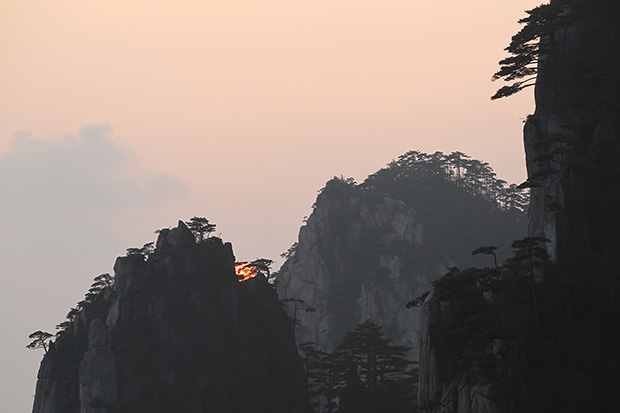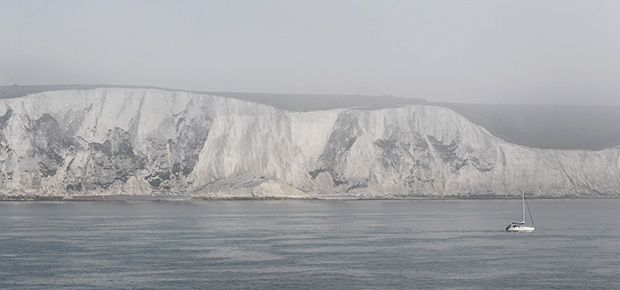Today it’s possible to shoot a lot of images, which can be a fast way to improve – but only if you improve your editing ability. Robert Keeley explains.
Digital photography has radically changed most people’s approach to shooting images. Even many professionals tend to shoot more images now than they used to, simply because they can. But for enthusiasts this can be a two-edged sword. Whilst professionals understand what they’re letting themselves in for when they shoot a lot of photos, amateurs might not appreciate the potential workload they’re creating.
There’s no doubt that by shooting more pictures and quickly assessing them on a rear screen, amateurs can soon eliminate some basic errors in their approach. But a less obvious problem can arise after they start to accumulate vast quantities of images on hard drives and various other storage devices. When they accumulate these stockpiles most people tend not to look at them again. The speed of the digital process tends to encourage amateurs to keep collecting images, but then spend less time assessing them. In fact, critical assessment of your images is one of the most fundamental ways to improve your photographic skills.
So here I am discussing editing as a process of evaluating your images, rather than working through a post-production process of adjustments. Improving your basic assessment skills can make you a much better photographer. Here’s a few points to consider.
1. The Quick Cull
Most digital photographers understand the initial ‘quick cull’ procedure. Reviewing on your rear camera screen works well enough, but it can be a hidden trap, especially for those shooting fast-moving events, sports, or wildlife. While you’re reviewing your last shot (a common enough reaction) it’s quite possible you’re missing the next phase of the event you’re trying to cover. Every photographer has fallen to this temptation. The other downside of this approach is the extra camera battery capacity it uses up. Try and train yourself to minimise the amount of rear screen viewing you undertake whilst you’re actually shooting, and leave it for the more considered environment of your laptop or desktop computer back home. It pays to focus on one task (shooting or editing) at a time!
2. Aim for In-Camera Results
Shooting for results ‘in-camera’ is a well-worn cliché, but clichés exist because they have strong element of fact in them! What exactly does getting results ‘in-camera’ mean? Basically it means that the more correctly exposed and composed you make an image when you shoot it, the less time you’ll spend trying to correct it on a computer afterwards. Lots of people like fiddling with their images in post-production and there’s nothing wrong with that. But it doesn’t alter the validity of the proposition that you should aim to make your shot as accurate as possible when you shoot it.

By shooting with a tripod and pre-planning you can minimise the number of poor images you shoot. In this scenario, though using a tripod, I shot several images with the setting sun at different positions. However, by minimising the number of potential errors, I still kept the number of images to a manageable level.
Some old-school photographers use the so-called ‘bracketing’ technique to make sure they get a shot. This means they shoot a picture at what they believe (and what their camera’s on-board computer tells them) is the ‘correct’ exposure, but then they also under expose and over-expose their image, usually by one third of a stop. This is an effective fail-safe method of making sure you get a useable picture, though it will result in more editing afterwards. Whichever way you go, try to get the most accurately exposed image you can when you’re shooting. It will save you time afterwards.
3. Crop to Improve
Not matter how accurately you compose a scene, there will be times when you simply won’t get a scene exactly as you like it. Shooting with a tripod greatly minimises this problem, but if you are shooting sports or some other action without a tripod, it can be extremely difficult to get everything right. That doesn’t mean you should discard an image. A carefully considered crop (which is now much easier to do with software than it was in the days of film) can make all the difference to some photographs. Remember the rule of thirds when composing (where you divide your scene into a ‘noughts and crosses’ grid, and place the key subject or subjects where the lines intersect).
This rule equally applies when you’re cropping a scene. Some software allows you to place lines over your scene so avail yourself of this option if you have it. And remember that some scenes can improve dramatically if you crop for a panoramic format. Creative cropping can become a vital part of your editing procedure.

In this scene there is no key element in the top half of the frame. It could be improved by cropping to a panoramic format.

By removing the top part of the composition it allows us to focus on where the key points of interest are. While complex post-production can work, often the simplest improvements will have the biggest impact.
4. Take a Second Glance
There’s a saying that first impressions count. Certainly, some shots aren’t worth a second glance. They may be blurred, out of focus, too far away for rescue by cropping, or have completely missed the subject you were trying to photograph! But sometimes images do reward a second viewing. This is another reason why it pays not to edit so much on a rear camera screen. If you’re at all equivocal about a picture, don’t cut it, save it for a second viewing. It’s surprising how often your initial assessment can be premature. Even if you do eventually discard an image, looking at it under more controlled circumstances might present other ways to improve the shot, or even give you an idea for a different type of shot at a later time or one at the same location under different circumstances.
Editing - in the sense of developing the ability to dispassionately assess your shots - is just as important a skill as shooting, or even editing via software, though it’s often underrated. If you can develop your editing technique it will do as much to improve your photography as buying a new lens or an updated piece of software. Sharpen your editing eye, and improve your photography.

When you spot a subject with potential, by all means shoot a series of images. But try not to shoot to excess, and don't review all the time. It will distract you from other moments, and use up battery power. When I spotted this woman busking I realised the scene could make a nice image, but while she was looking down the scene lacked interest. I shot a couple of versions of this scene, but I still waited in anticipation of something more appealing happening.

To my way of thinking the scene looked more dynamic when the busker was playing her instrument, and by focusing on the moment when she did so, I grabbed a better image. Later I straightened the lines in post-production, but the key was capturing the most interesting moment.








